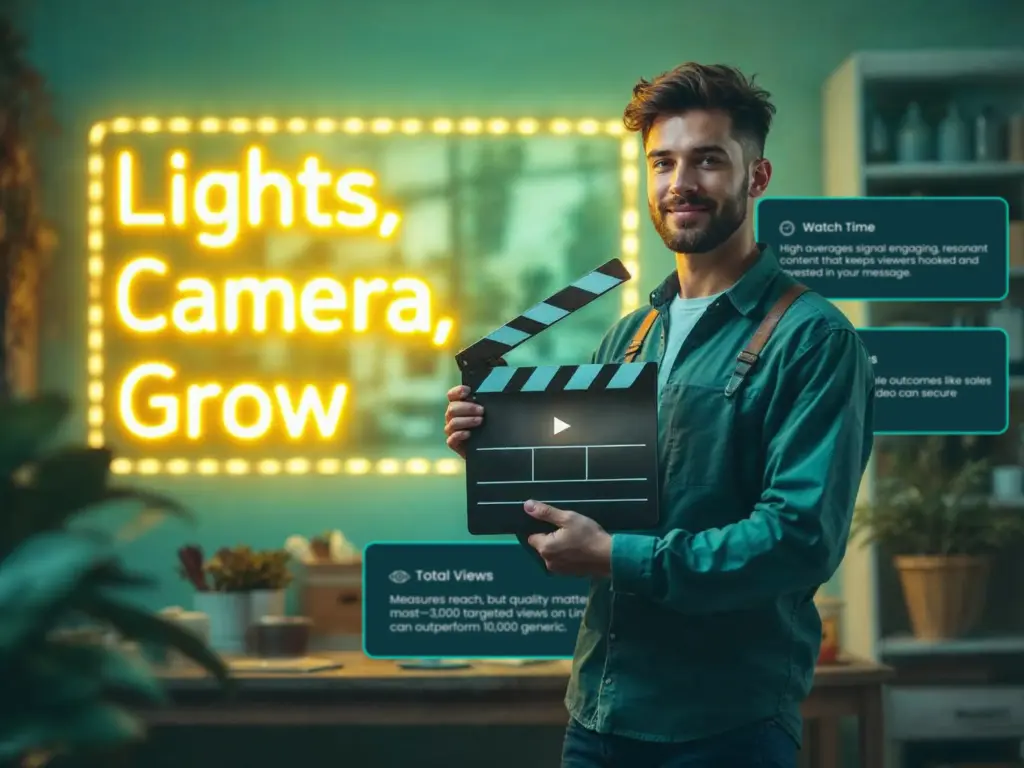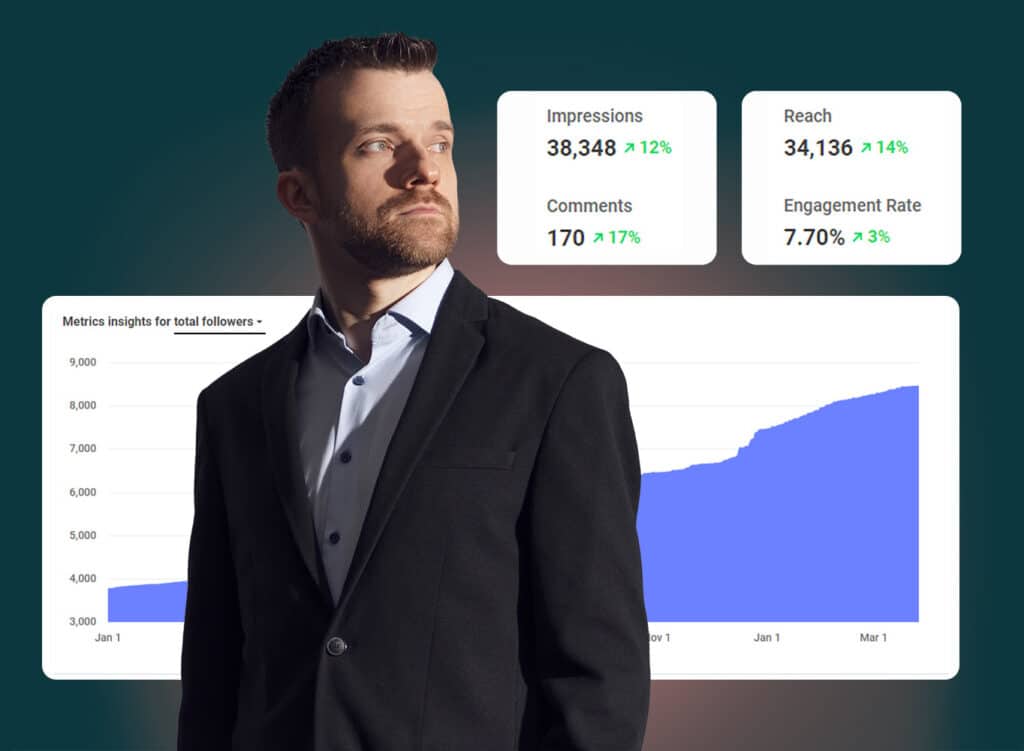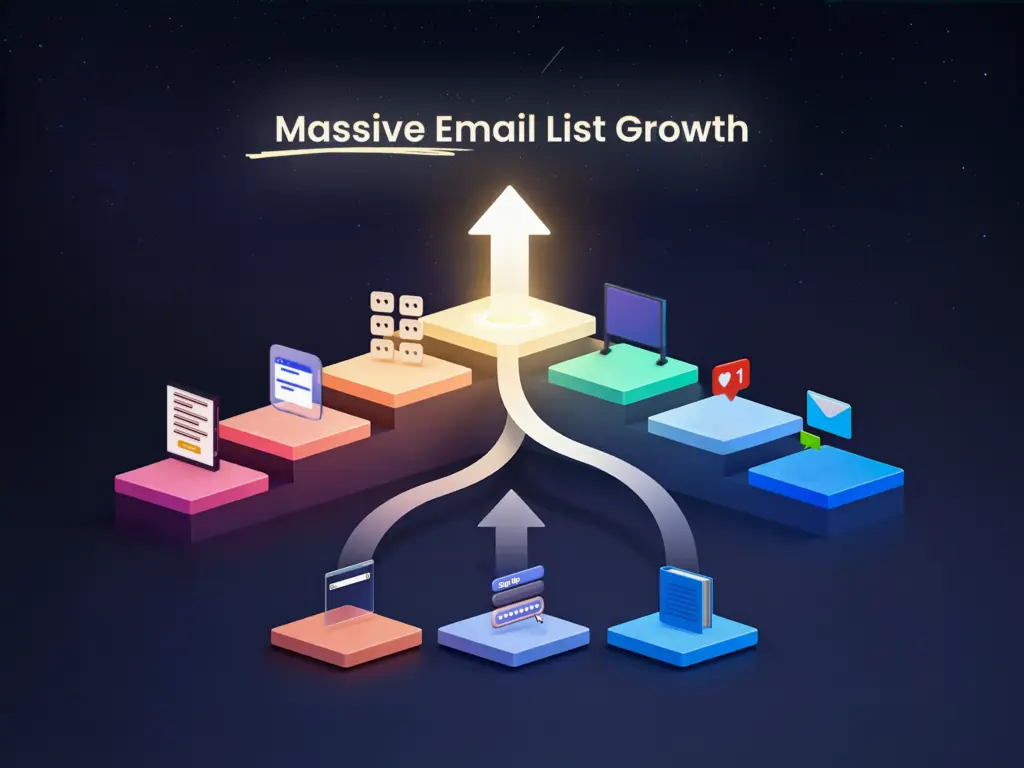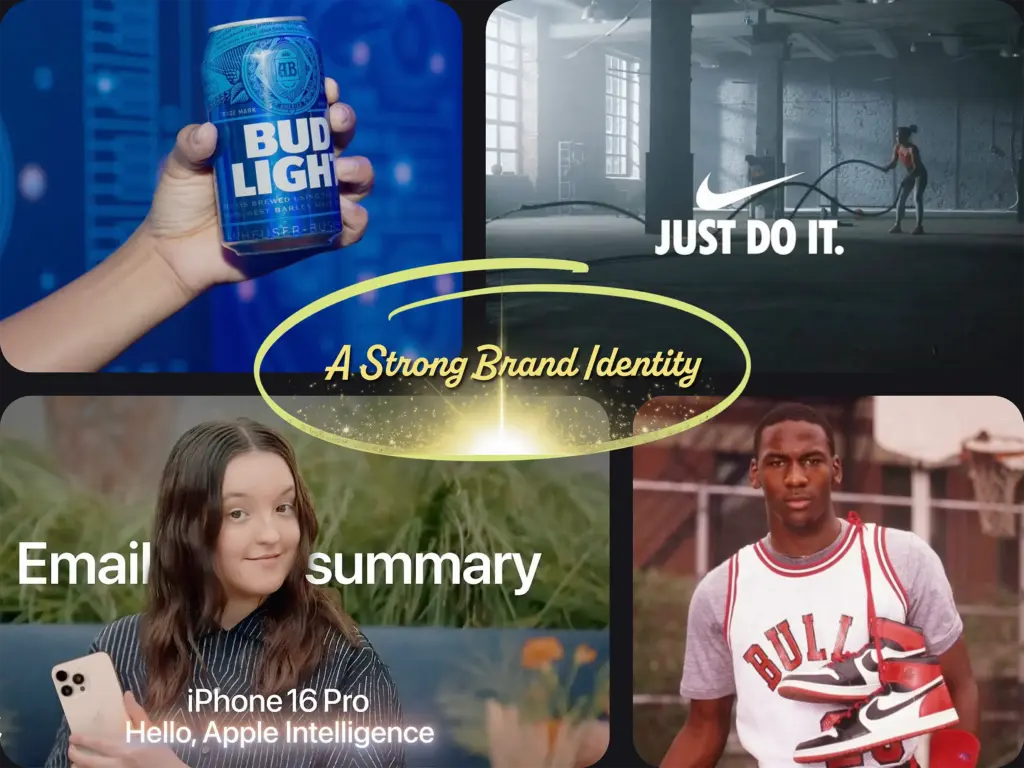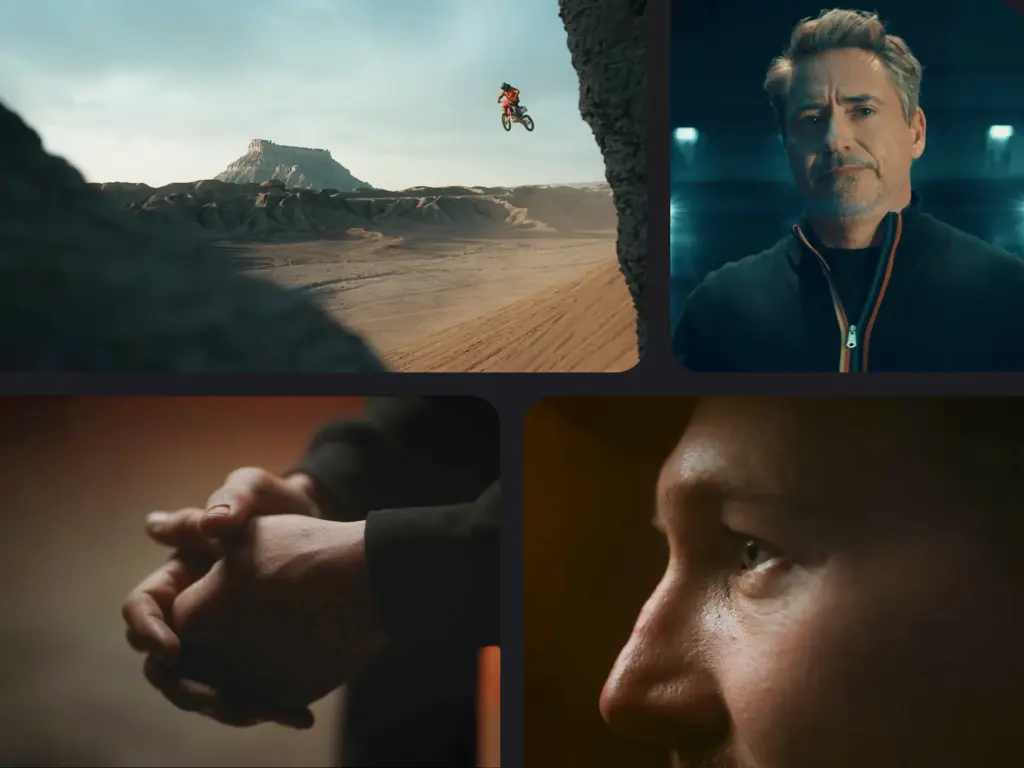In today’s digital era, a video marketing strategy for small businesses is vital for enhancing brand visibility, engaging audiences, and driving growth. With billions of users consuming content daily on social media platforms and video hosting platforms like YouTube, TikTok, and Vimeo, video content has become a cornerstone of modern marketing strategies.
This comprehensive guide offers a detailed roadmap for crafting a successful video marketing strategy, mastering video content creation, and amplifying video marketing efforts to achieve measurable results. Drawing on expert insights and proven tactics, this article equips small businesses to create short form video content, explainer videos, customer testimonial videos, and brand videos that captivate their target audience and deliver video marketing success.
Let’s explore how to build a winning video marketing strategy that propels your small business forward.
- Crafting a tailored video marketing strategy can effectively showcase your small business’s unique value proposition.
- Understanding your target audience is essential for creating impactful video content that resonates.
- Utilizing diverse video formats such as explainer videos and customer testimonials can significantly boost conversions.
- Regularly reviewing analytics helps optimize future video marketing efforts and align them with audience preferences.
Why Video Marketing is Essential for Small Businesses
Video marketing has revolutionized how businesses connect with consumers. Recent studies show 91% of businesses leverage video content as a primary marketing tool, while 96% of consumers have watched an explainer video to learn about a product or service. This widespread adoption underscores the importance of video in modern marketing strategies.
Videos are engaging, shareable, and memorable, making them indispensable for any content marketing strategy focused on building trust and boosting conversions. They capture attention in ways static content cannot, creating lasting impressions. For example, we’ve created this inspirational video below for International Women’s Day to highlight the contributions of the Iranian-Canadian community for one of our clients.
For small businesses, video marketing offers unique advantages. It’s cost-effective, allowing you to create video content using smartphones and social media management software without significant investment. This accessibility levels the playing field, enabling small businesses to compete with larger brands.
Embedding YouTube videos or video clips on your website enhances search engine rankings, as popular search engines like Google prioritize pages with video content. This SEO boost drives organic traffic, increasing visibility.
Videos humanize your brand. Customer testimonials, behind-the-scenes footage, and brand videos foster credibility with potential customers, creating emotional connections that build loyalty.
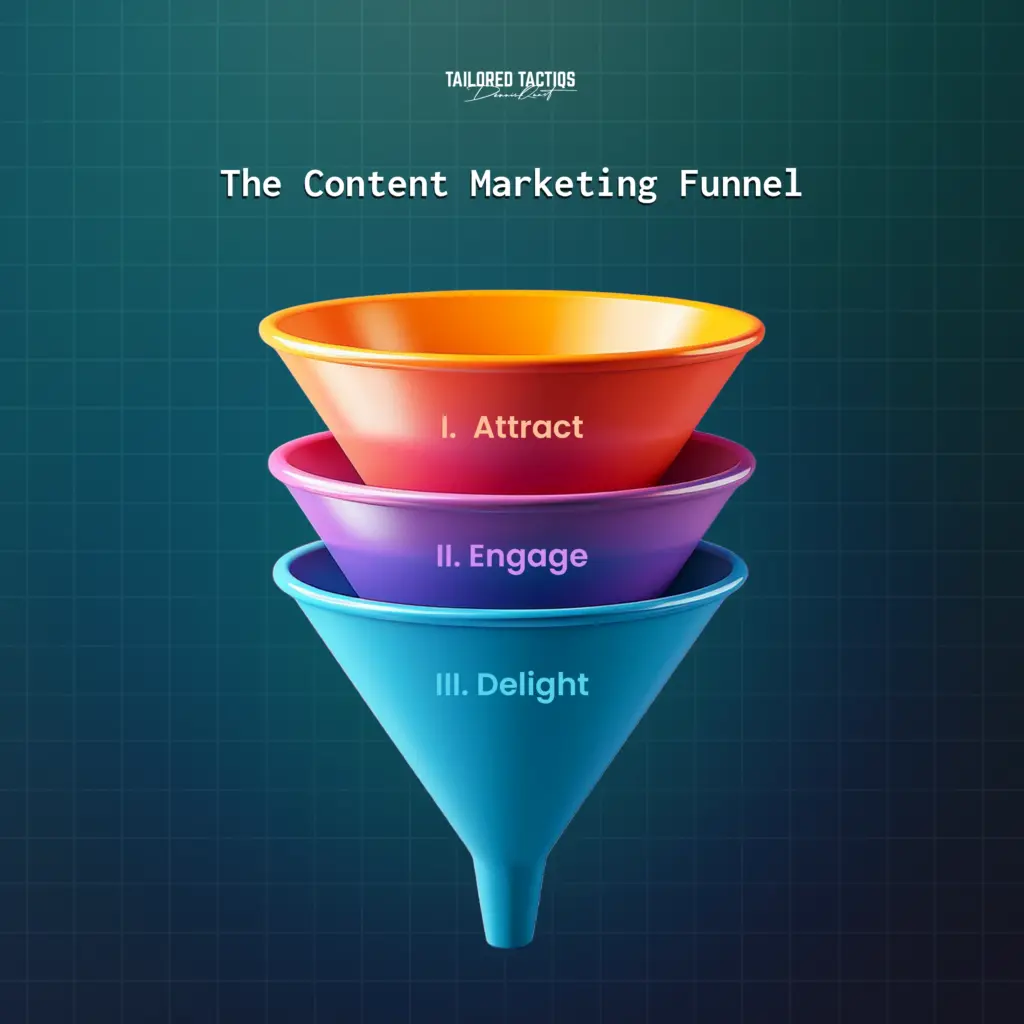
In the marketing funnel, formats like demo videos and testimonial videos can increase conversions by up to 80%. Including a clear call to action (CTA) that directs the viewer’s next steps further improves video effectiveness. You can find more information on the marketing funnel in our content marketing guide.
Videos adapt to diverse video platforms, from short-form video on TikTok to long-form video content on YouTube. They generate 48% more engagement than text or images on social media channels, amplifying your reach.
By integrating video marketing into your social media marketing strategy, small businesses can achieve measurable results, from increased brand awareness to higher sales. Even long form video content can captivate if compelling, offering flexibility to tailor content to audience preferences.
Crafting an Effective Video Marketing Strategy
A winning video marketing strategy requires careful planning and execution. Here’s how to develop an effective video marketing strategy tailored for small businesses, informed by expert insights and industry best practices.
1. Define Clear Video Marketing Goals
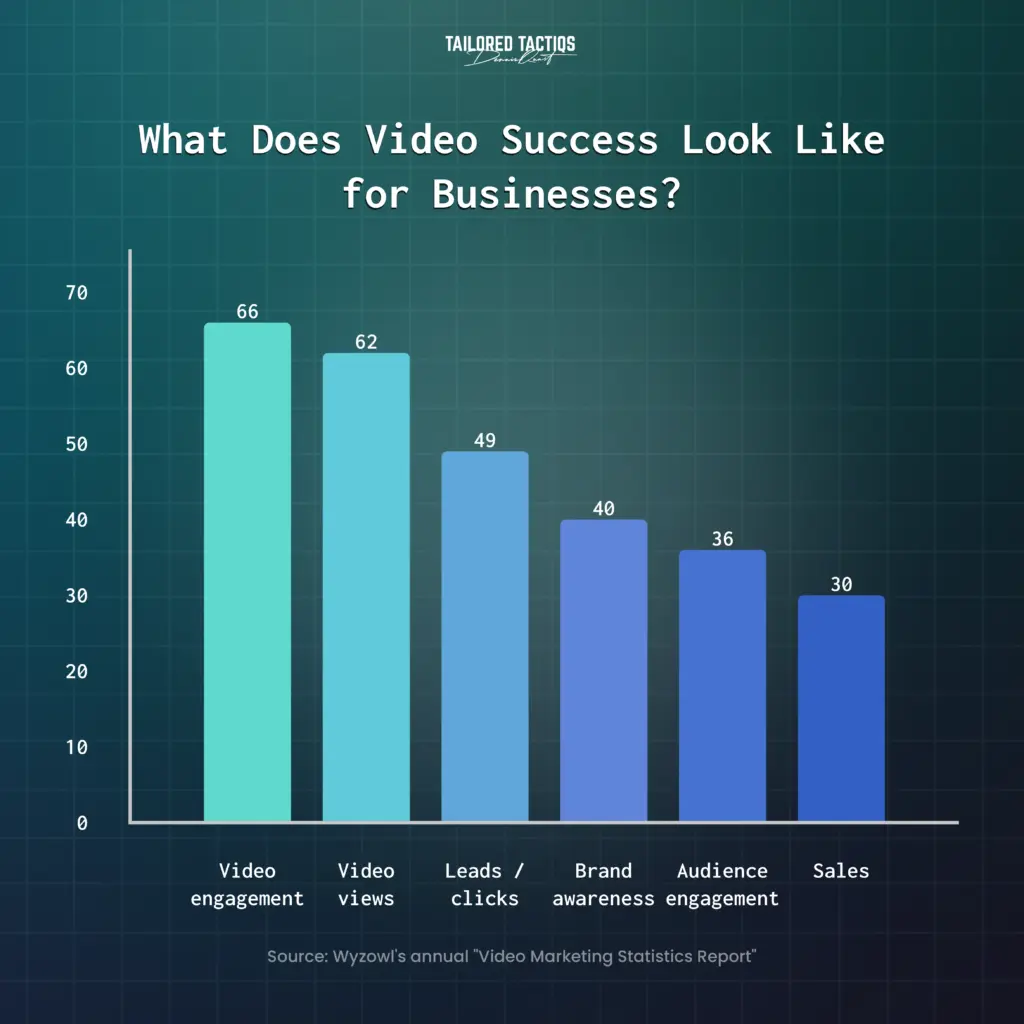
The cornerstone of a successful video marketing strategy is defining precise video marketing goals. Start by clarifying your objectives. Are you aiming to boost brand awareness with engaging videos?
Do you want to drive website traffic through social media video? Perhaps you’re focused on increasing sales with product videos or demo videos. Or is your priority to educate your audience with how-to videos or educational videos?
Each goal shapes your video strategy, influencing content type, length, and distribution channels. For example, short form video content (8–15 seconds) thrives on TikTok for quick engagement, while long form video content (5–10 minutes) suits YouTube videos for in-depth storytelling.
Begin by determining what you want viewers to think, feel, or do. This ensures your actual video aligns with your marketing campaign, maximizing impact.
2. Understand Your Target Audience
Creating quality video content starts with understanding your intended audience. Consider their pain points, interests, and preferred social media platforms. A B2B business might target executives on LinkedIn, while a retail brand could focus on Gen Z via Instagram Reels.
Ask what content resonates—whether it’s animated explainer videos, customer testimonials, or instructional videos. This insight informs creative decisions like tone, pacing, and visuals, ensuring your video marketing efforts connect and convert.
Audience understanding guides video length and style. A professional audience may prefer concise professional videos, while younger viewers may engage with humorous short form video. Tailoring content to these preferences enhances engagement.
3. Choose the Right Video Types
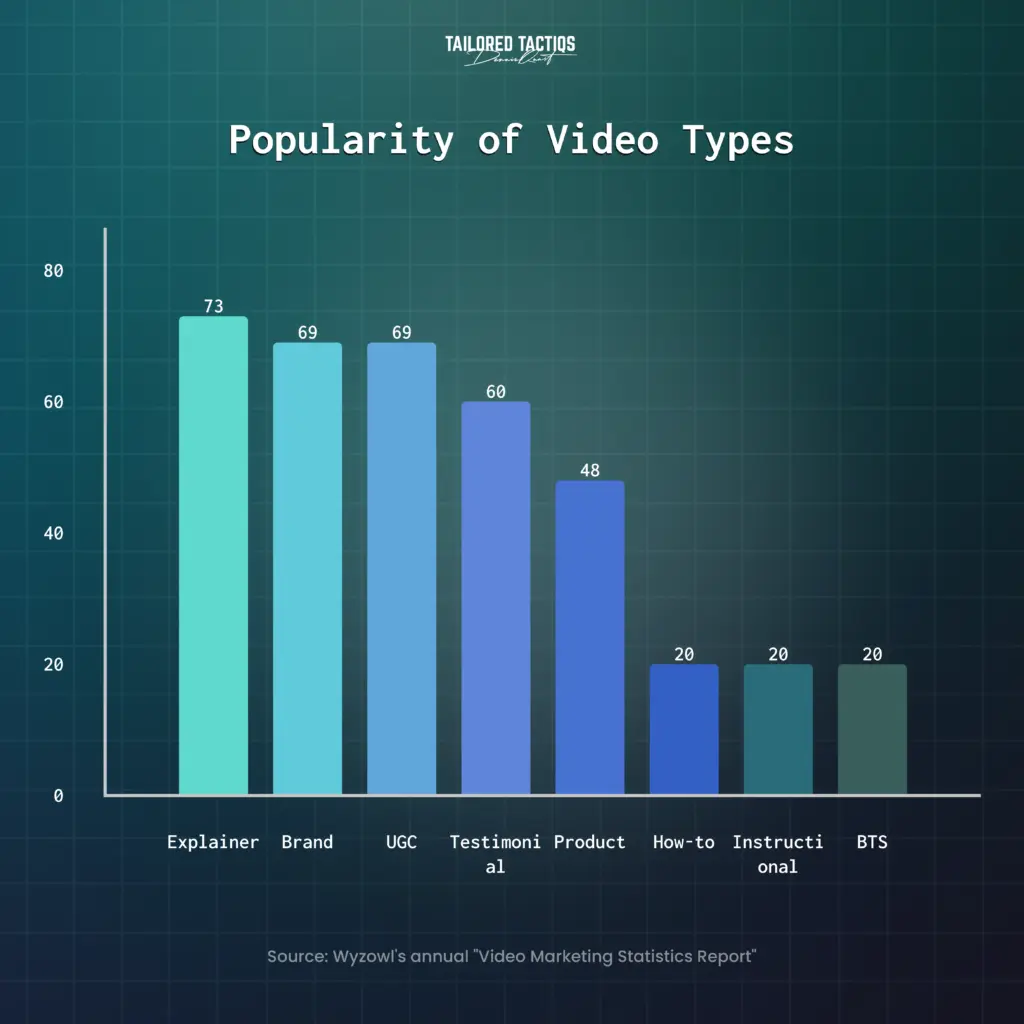
Selecting the right video types aligns your content with your marketing funnel. Here are key formats to consider:
- Explainer Videos: Simplify complex products or services through animated explainer videos or live-action demos, ideal for introducing offerings.
- Customer Testimonial Videos: Showcase authentic stories to build trust, leveraging real experiences to connect emotionally.
- Product Videos: Highlight features and benefits to drive sales, focusing on problem-solving. These videos are particularly effective in showcasing best-selling products and their top features, aimed at attracting new customers during product research stages.
- Behind-the-Scenes Videos: Reveal your brand story for emotional connections, showcasing company culture.
- How-to Videos: Teach actionable skills, positioning your brand as a helpful resource.
- Brand Videos: Communicate your mission and values to inspire loyalty, creating a narrative.
- Instructional Videos: Guide users through your product or service, enhancing satisfaction.
- User-Generated Content: Encourage customer-created video content for authentic promotion.
Diversifying your video content keeps your strategy dynamic. Long form video content can engage if compelling, while simpler formats like testimonial videos suit beginners.
Tailor video types to your audience. Younger demographics may prefer short form video with humor, while professionals favor professional videos with clear value propositions. Experimenting with formats ensures broad appeal and maximizes engagement across platforms.
4. Plan Your Video Content Creation

Effective video planning is critical for producing high quality video content. Follow these key steps to ensure a smooth and successful video creation process:
Scripting and Storyboarding
Start with scripting by writing concise scripts, typically 120–150 words per minute, to maintain focus and clarity. Use high-quality visuals to show rather than tell, reducing reliance on narration for a more engaging experience. Storyboarding helps visualize the entire video flow, ensuring a cohesive narrative and aligning visuals with the script. For storyboarding, we recommend Boords or Milanote.
Equipment and Shooting
Small businesses can shoot high-quality videos using accessible tools like iPhones, enhanced with accessories such as lighting, microphones, and tripods to add a professional polish. Benett Graezer published a great YouTube video on what accessories and settings help you in recording high-quality footage.
Plan to shoot in multiple formats (e.g., 16:9 for YouTube, 9:16 for TikTok and Instagram) to suit various video platforms, ensuring versatility across social media channels.
Creative Brief and Team Alignment
Develop a creative brief outlining the video’s purpose, tone, and key messaging to keep the production team aligned throughout the process. Planning for multiple outputs—such as social media videos and ads—during a single shoot maximizes value, stretches your budget, and amplifies reach.
Scheduling and Timelines
Establish clear timelines early on for every member of the production team. This ensures smooth coordination, adherence to deadlines, and efficient resource management, which are essential for meeting project goals and maintaining quality standards.
Utilizing Social Media Management Tools
Leverage social media management software like Buffer to schedule posts and maintain consistency in publishing across platforms. This supports a steady flow of content and helps monitor engagement effectively.
By structuring your video planning with these focused steps, you can streamline the video creation process, produce engaging and professional video content, and optimize your video marketing strategy for small businesses.
5. Optimize for Social Media Platforms
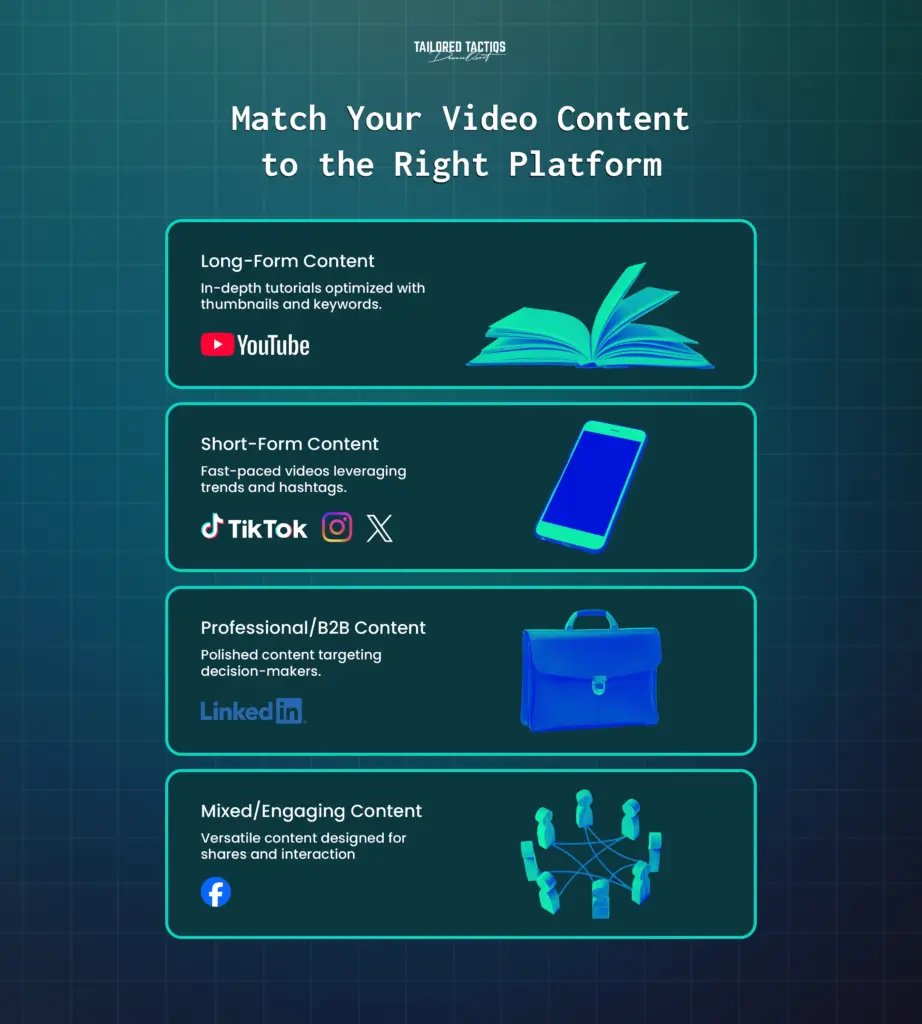
Each social media platform requires tailored video content to maximize impact. YouTube excels for long-form video content like educational videos or how-to videos, optimized with compelling thumbnails, keyword-rich titles, and tags to boost discoverability.
TikTok and Instagram Reels prioritize short form video content with strong hooks to capture attention instantly. LinkedIn is ideal for professional videos like brand videos or customer testimonials, targeting B2B audiences and decision-makers.
Facebook supports a mix of video clips, user-generated content, and engaging videos to drive shares and interaction. X (formerly Twitter), benefits from short form video paired with trending hashtags to enhance visibility.
Use video analytics to track video views, watch time, and click-through rates, refining your social media marketing strategy. LinkedIn’s organic reach is particularly powerful for B2B businesses, making it a key platform for professional content.
Posting natively and optimizing for each platform’s algorithm ensures your videos reach the right audience at the right time, driving engagement and conversions.
Budgeting for Video Marketing
Budgeting is a critical aspect of video marketing for small businesses. Costs vary widely based on factors like crew size, equipment, locations, and post-production needs. For small budgets, iPhone shoots with minimal accessories like tripods, microphones, and LED lights keep expenses low.
For more complex projects, partnering with a production company ensures professional video quality but increases costs. To set a realistic budget, consider what success looks like—new clients, increased sales, or enhanced brand awareness—and allocate funds accordingly.
Maximize ROI by capturing multiple assets during a single shoot (don’t forget B-Roll footage), such as social media video, website embeds, and video clips for ads. This approach reduces the need for additional shoots, saving time and money.
Allocate a portion of your budget for paid promotion on social media platforms to amplify reach, especially for key marketing campaigns. A targeted ad campaign can boost visibility and drive conversions, complementing organic efforts.
Consider these budgeting strategies:
- Start with iPhone shoots to test concepts before investing in professional production.
- Prioritize high-impact assets like customer testimonial videos for immediate ROI.
- Use free or low-cost editing tools initially, upgrading as your strategy scales.
Balancing cost with strategic planning ensures video marketing success without overspending, making video accessible for small businesses of all sizes.
The Video Creation Process: From Concept to Completion
Producing high quality videos requires a structured video process. Here’s a detailed breakdown of the stages, blending expert insights and practical tactics to guide small businesses.
1. Pre-Production
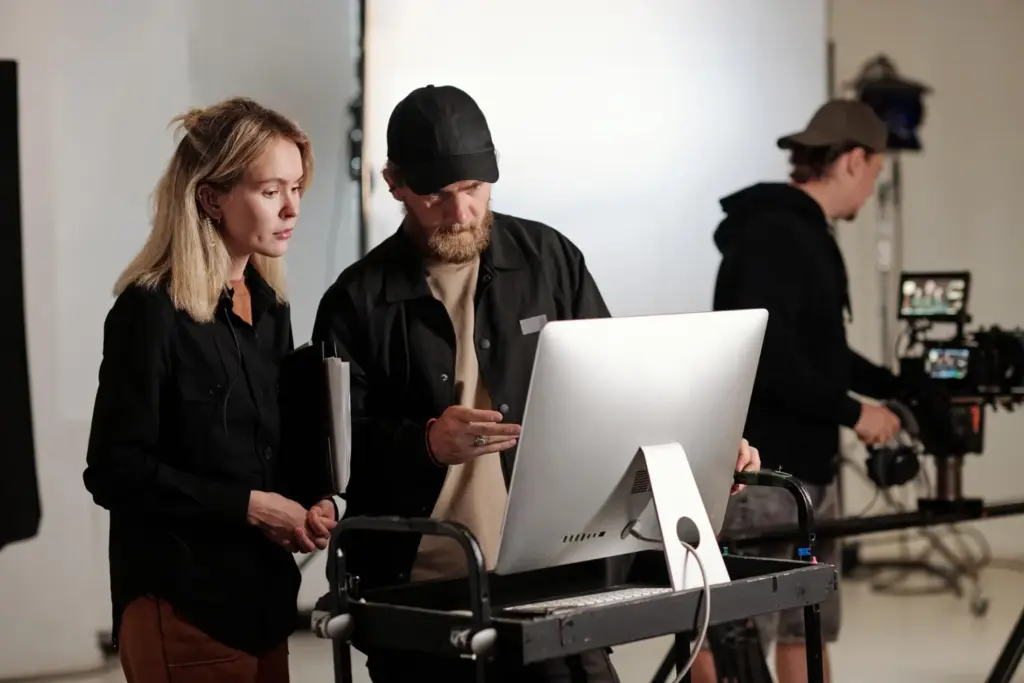
Pre-production lays the groundwork for a successful shoot and ensures your video marketing efforts align with your broader marketing strategy. This phase is crucial for establishing clarity and focus from the outset.
Align Video Marketing Goals
Start by aligning your video marketing goals with your overall marketing strategy. This clarity guides all subsequent decisions and ensures your video content supports your business objectives.
Budget Planning
Budget planning is essential. For small businesses, cost-effective options like iPhone shoots require minimal investment in accessories. More complex projects may necessitate hiring a production company, which increases costs but delivers polished results.
Stakeholder Engagement
Engage key decision-makers early in the process to prevent late-stage changes that can disrupt timelines and budgets.
Audience and Competitor Research
Conduct thorough research to understand your target audience’s preferences and analyze competitors’ video strategies. This insight helps identify opportunities to differentiate your content.
Creative Brief Development
Develop a detailed creative brief outlining the video’s purpose, tone, and messaging. This document keeps the team aligned and serves as a roadmap throughout production.
Logistics Coordination
Coordinate all logistical elements, including talent, locations, and props. Proper planning ensures a seamless shoot and minimizes errors.
A well-executed pre-production phase maximizes efficiency and sets the stage for creating high quality video content.
2. Production
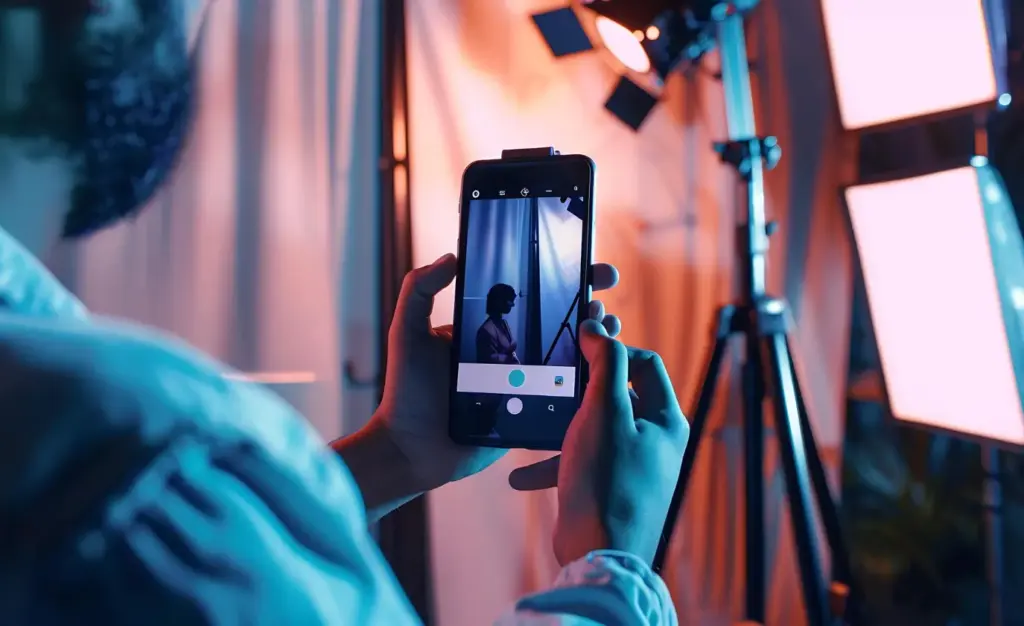
During production, focus on capturing high-quality videos by paying attention to key technical and creative elements. Here’s how to structure your production phase for maximum impact:
Lighting, Audio, and Framing
Use proper lighting to ensure your subjects are well-lit and visually appealing. Good audio quality is equally important—invest in microphones or use quiet environments to minimize background noise. Frame your shots thoughtfully to create professional-looking videos that align with your brand aesthetics. For a quick and insightful explanation of lighting importance, consider watching Peter McKinnon’s video:
In this video, he highlights how effective lighting can dramatically improve your video quality.
Equipment and Budget-Friendly Options
While professional cameras can enhance quality, iPhone shoots with manual settings and tripods offer a budget-friendly alternative for small businesses. These tools can deliver impressive results when used correctly.
Multi-Purpose Footage Capture
Plan to capture video footage that serves multiple purposes, including social media video, website embeds, and video clips for ads. This maximizes the value of your shoot and reduces the need for additional sessions.
Still Photography Integration
Hire a photographer to capture still images during the video session. These photos provide versatile marketing assets for use across your campaigns.
On-Camera Talent Coaching
Coach your on-camera talent to project energy and confidence, as cameras often diminish natural charisma. For scripted content, consider using teleprompters to ensure smooth and professional delivery.
Behind-the-Scenes and Additional Clips
Film behind-the-scenes footage or extra video clips that can be repurposed in future campaigns. These add authenticity and variety to your content library.
Brand Consistency on Set
Ensure the set design aligns with your brand story through thoughtful use of props, lighting, and staging. A cohesive visual identity resonates more deeply with viewers and reinforces brand recognition.
By organizing your production phase around these structured components, you can efficiently create high quality video content that supports your overall video marketing strategy and drives engagement.
3. Post-Production
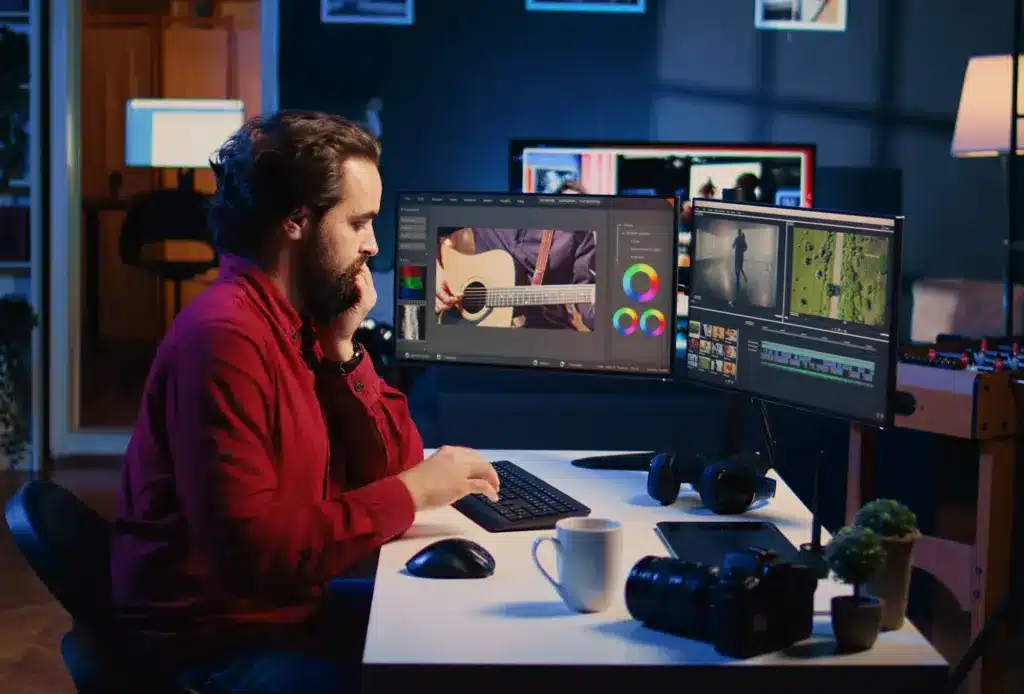
The post-production process transforms raw footage into polished high quality video content. This stage involves several key steps to ensure your videos are engaging and optimized for various platforms:
Editing and Cutting
Edit footage for pacing and engagement, creating multiple videos (e.g., 30-second, 15-second, 6-second cuts) tailored for different platforms. This approach maximizes the use of your content across social media channels.
Motion Graphics and Music
Add motion graphics or text overlays to enhance animated explainer videos or branded content. Select royalty-free music that complements your brand story, setting the emotional tone and enhancing viewer experience.
Color Grading and Visual Consistency
Adjust colors through color grading to ensure high quality visuals and visual consistency across your videos. This step enhances the professional feel of your content and reinforces your brand identity.
Thumbnails and Titles
Design attention-grabbing thumbnails and keyword-optimized titles to boost video views. Thumbnails are often the first impression viewers have, so make them compelling and relevant to increase click-through rates.
Accessibility and Quality Review
Include subtitles for social media video to improve accessibility and engagement, especially for viewers watching without sound. Conduct a final quality review to catch any errors, ensuring a polished final product ready for distribution.
4. Advanced Post-Production Techniques

To elevate your video content, explore advanced post-production techniques that add polish and professionalism.
Color Grading: This sets the mood of your video—warm tones in brand videos evoke trust and friendliness, while cooler tones in tech-focused explainer videos create a sleek, modern aesthetic.
Sound Design: Incorporate ambient effects and subtle audio transitions to enhance immersion. Thoughtful sound choices deepen the emotional connection with viewers and make your content more engaging. Lens Distortions exemplifies this perfectly with their teaser video for its sound library, showcasing how high-quality sound design can elevate video content:
Motion Tracking: Use motion tracking to add dynamic text or graphics that follow key elements in product videos. This draws attention to important features and boosts viewer engagement.
AI-Powered Editing Tools: Leverage AI tools to automate tasks like cutting filler words, stabilizing shaky footage, or generating closed captions. These tools save time and let you focus on creative decisions.
Editing Styles: Test different editing styles to match your audience’s preferences. Fast cuts energize short videos, while slower pacing suits long form video content, allowing for richer storytelling.
By incorporating these advanced techniques, your digital video content will stand out in a crowded space, delivering a high quality production that leaves a memorable impression.
5. Distribution and Promotion
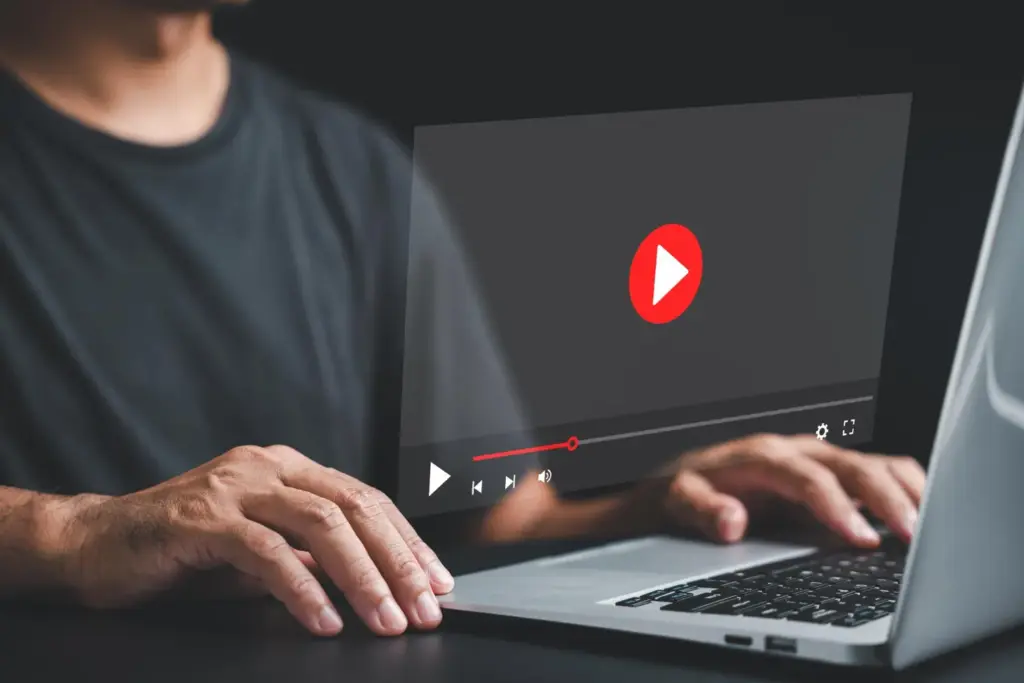
Effective distribution amplifies your video content’s reach, making video marketing important for expanding your brand’s visibility. Upload videos to hosting platforms like YouTube, Vimeo, or Wistia to embed on your own website and access robust video data analytics, enabling you to track performance and audience engagement.
Distribute video content across your owned channels, such as your website and email newsletters, to establish credibility and ensure direct engagement with your audience. Posting videos natively on social media channels optimizes engagement since each platform’s algorithm favors native content. Tailor your posting strategy by incorporating video that aligns with audience behavior and peak engagement times to reach a broader audience.
Embed videos on key website pages like FAQs, landing pages, or blog posts to improve search engine rankings and enhance user retention. Videos increase the time visitors spend on your site, boosting SEO and reinforcing your marketing strategy.
Organize and catalog video footage for repurposing in ads, email campaigns, or social media video, extending the value of your shoot and streamlining future video creation efforts. Include video clips in email newsletters to boost open rates and drive conversions.
Leverage targeted ads on social media platforms to amplify key marketing campaigns, reaching specific audience segments effectively. Encourage employees to share video content on their personal social media channels to expand organic reach through authentic advocacy.
Cross-promote with partners or influencers to tap into new audiences and further establish credibility. Collaborations aligned with your brand values amplify reach and resonate with potential customers.
Finally, use social media management software to schedule posts strategically, maintain consistency, and capitalize on high-traffic periods, ensuring your videos reach viewers at the right moment for maximum impact.
Measuring and Optimizing Video Marketing Success
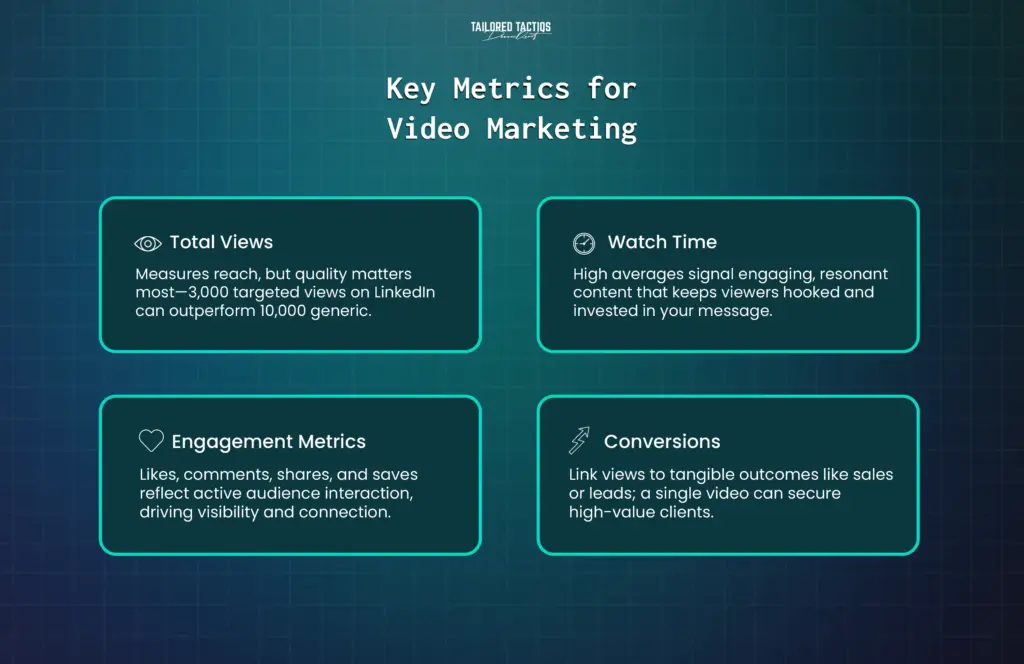
Tracking video analytics is essential for evaluating video marketing success. Total views measure reach, but quality outweighs quantity—3,000 targeted video views on LinkedIn can be more valuable than 10,000 generic views. The effectiveness of video marketing can also be measured through key performance indicators (KPIs) such as watch time and engagement rates, providing deeper insights into audience behavior.
Watch time indicates engagement, with high averages signaling resonant video content. Click-through rates track actions like website visits, while conversions link video views to tangible outcomes like sales or leads.
Engagement metrics—likes, comments, shares, and saves—reflect audience interaction. For small businesses, modest video views can yield significant ROI, such as a customer testimonial video securing a high-value client.
Use social media management software to consolidate analytics and identify trends, such as top-performing video types or social media channels. This data informs future content decisions, optimizing performance.
To refine your video marketing efforts, consider these optimization strategies:
- A/B test thumbnails and titles to increase video views, identifying what resonates.
- Experiment with video lengths to suit your target audience’s preferences.
- Analyze drop-off points in video analytics to refine pacing and content flow.
- Gather viewer feedback via comments or surveys to inform your content marketing strategy.
Regularly reviewing analytics ensures your video strategy evolves with audience behavior, maximizing impact over time.
Advanced Strategies for Engaging Video Content
To create engaging videos that stand out, use these structured tactics tailored to modern audiences:
- Capture Attention Quickly: Hook viewers within the first 3–8 seconds using a bold question, striking statistic, or captivating visual. Quick hooks are essential in a landscape with short attention spans.
- Embrace Authenticity: Utilize iPhone videos or user-generated content to create relatable, genuine videos that resonate on platforms like Instagram and TikTok, fostering trust and connection.
- Leverage Visual Storytelling: Use high quality visuals or B-roll footage to convey your message efficiently, minimizing narration. Showing rather than telling creates a more immersive experience.
- Maximize Content Value: Produce multiple videos from a single shoot (e.g., 15-second social media clips, 6-second ads) to extend your reach and optimize budget.
- Focus Messaging: Keep each video centered on one key point to maintain viewer interest and clarity, avoiding information overload.
- Incorporate Storytelling: Weave narratives into brand or testimonial videos to evoke emotion and create lasting impressions that humanize your brand.
- Optimize for Mobile: Design videos for mobile viewing by ensuring text and visuals are clear on smaller screens, and add subtitles for accessibility, especially for silent viewing.
- Experiment with Trends: Integrate humor or trending formats thoughtfully to boost virality while staying true to your brand story.
- Include Clear Calls to Action: Guide viewers toward desired actions like visiting your website or making a purchase, effectively moving them through the marketing funnel.
- Use Data to Improve: Analyze video analytics to understand what resonates, enabling continuous refinement and better performance.
- Add Interactive Elements: Incorporate polls, quizzes, or clickable links in social media videos to increase engagement and sharing, particularly on platforms like Instagram and Facebook.
By following this structured approach, your videos will engage your audience effectively, support your brand story, and drive meaningful results.
Audience Engagement Tactics

Engaging your target audience extends beyond creating high-quality video content. To foster active participation and strengthen your brand connection, consider these effective tactics:
- Encourage Interaction: Pose questions in your videos to prompt viewers to comment or share their thoughts. For example, a how-to video could conclude with, “What’s your biggest challenge with this task? Let us know below!”
- Use Interactive Elements: Incorporate polls or quizzes in social media videos, especially on platforms like Instagram and Facebook, to boost engagement and encourage sharing.
- Host Live Q&A Sessions: Connect with your audience in real time by answering questions, sharing insights, and showcasing your expertise, which builds trust and community.
- Respond to Comments Promptly: Demonstrate that your brand values feedback, fostering loyalty and turning casual viewers into advocates.
- Launch User Challenges or Contests: Encourage user-generated content by inviting customers to share videos using your product or service, amplifying your reach through their networks.
These tactics create a two-way dialogue, transforming passive viewers into active participants and strengthening your brand’s connection with its audience.
Common Mistakes to Avoid in Video Marketing
To ensure video marketing success, steer clear of common pitfalls that can undermine your efforts. Rushing production without clear video marketing goals leads to misaligned content that fails to resonate with your audience.
Ignoring video analytics limits your ability to optimize performance, leaving you unaware of what works. Dense scripts overwhelm viewers, reducing engagement and causing them to tune out.
Poorly designed thumbnails cut video views, as they fail to capture attention in crowded feeds. A compelling thumbnail is often the difference between a click and a scroll-past.
1. Quality and Optimization Issues
A hasty post-production process compromises quality, resulting in unpolished videos that undermine your brand’s professionalism. Unoptimized video content, such as incorrect aspect ratios, reduces impact on social media platforms. Discover tips to edit videos in Premiere Pro much faster to enhance your editing workflow.
Failing to repurpose video footage misses cost-saving opportunities, limiting the value of your investment. Overriding your production company’s expertise stifles creativity, potentially weakening the final product.
2. Audience Engagement and Content Focus
Avoid overestimating viewer scrutiny. Audiences don’t analyze your video content as closely as you might think, so focus on delivering clear, valuable content rather than perfection.
Tools and Resources for Video Marketing
Small businesses can leverage affordable tools to streamline video content creation. Here are essential options to support your video marketing efforts:
- Video Editing Software: Adobe Premiere Pro, Final Cut Pro, or free tools like DaVinci Resolve and iMovie for professional-grade edits.
- Social Media Management Software: Hootsuite, Buffer, or Sprout Social for scheduling posts and analyzing performance metrics.
- Stock Footage Libraries: Pexels, Pixabay, or Coverr for royalty-free video clips to enhance your content.
- Music Libraries: Artlist, Epidemic Sound, or AudioJungle for royalty-free tracks that elevate emotional impact.
- iPhone Accessories: Tripods, microphones, and LED lights to produce high quality videos on a budget.
- Graphic Design Tools: Canva or Adobe Express for creating eye-catching thumbnails and text overlays.
These tools empower small businesses to produce high quality video content without breaking the bank, ensuring professional results that align with your brand’s goals.
Emerging Trends in Video Marketing
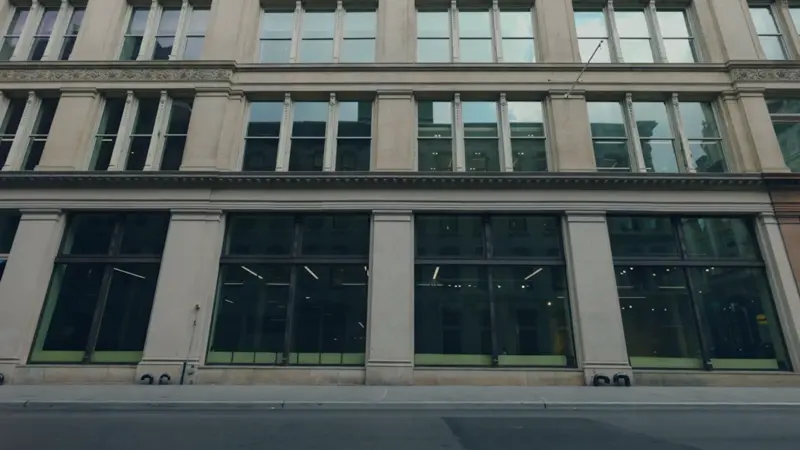
Staying ahead in video marketing requires adapting to emerging trends that shape audience behavior and platform algorithms. While TikTok and Instagram Reels initially popularized short-form video content, these platforms are now embracing a wider variety of video lengths and formats, allowing for more creative flexibility and deeper storytelling.
1. AI-Powered Tools and Automation
AI-powered editing and analytics tools are transforming video content creation, making it more accessible for small businesses. Tools like Runway and similar platforms automate tasks such as video editing, background removal, and adding effects, helping streamline the video creation process and save valuable time and resources. We’ve dedicated an entire article to the emergence of artificial intelligence in social media content. If you’re interested in learning more about how AI is being used in social media content, be sure to check it out.
2. Interactive and Immersive Video Content
Interactive videos, such as shoppable content or polls, are gaining traction. They enhance engagement by allowing viewers to interact directly with your product or service, driving conversions and fostering a sense of involvement.
Live streaming on social media platforms builds authenticity and immediacy. Real-time Q&As or behind-the-scenes streams create a sense of connection, encouraging audience loyalty and participation.
Augmented reality (AR) filters are creating immersive video content, particularly for younger audiences on platforms like Snapchat and Instagram. These filters add interactive elements, making videos more engaging and shareable.
3. Social Responsibility and Voice Search Optimization
Brand videos highlighting sustainability and social responsibility are resonating with conscious consumers. Showcasing eco-friendly practices or community initiatives can differentiate your brand and build trust.
Voice search optimization is becoming increasingly important. By incorporating relevant keywords into video titles, descriptions, and tags, you can ensure your video content is discoverable on popular search engines like Google, especially as voice-activated devices gain popularity.
Future-Proofing Your Video Marketing Strategy
To remain competitive, future-proof your video marketing strategy by embracing adaptability and innovation. Here are key steps to ensure your video marketing efforts stay effective and relevant:
- Invest in Scalable Tools: Utilize cloud-based editing platforms and collaborative software like Frame.io that can grow with your video production needs, streamlining workflows and enhancing efficiency.
- Train Your Team on Emerging Technologies: Equip your team with skills in AI-powered editing software and augmented reality (AR) content creation. Staying ahead of industry trends enables you to leverage new tools effectively.
- Leverage Data-Driven Insights: Regularly audit your video analytics to monitor changing audience behaviors and platform algorithms. Use this data to refine your strategy in real time and maintain relevance.
- Experiment with New Platforms: Stay agile by exploring emerging video platforms early. Platforms like TikTok have demonstrated how quickly new players can dominate the market, so adopting fresh channels can expand your audience.
- Build a Flexible Content Library: Organize and catalog your video footage for long-term use. A well-maintained digital asset library allows you to repurpose assets efficiently for future campaigns, maximizing the value of every shoot.
- Stay Informed on Algorithm Changes: Keep up-to-date with social media platform algorithm updates to maintain visibility. For example, Instagram’s shift to prioritize Reels requires adjustments in content strategy.
- Collaborate with Influencers and Industry Leaders: Partnering with influencers can keep your content fresh, relevant, and credible, while introducing your brand to new audiences.
By anticipating shifts in technology, audience preferences, and platform dynamics, your video marketing efforts will remain resilient, effective, and competitive in the long term.
Maximizing ROI Through Repurposing
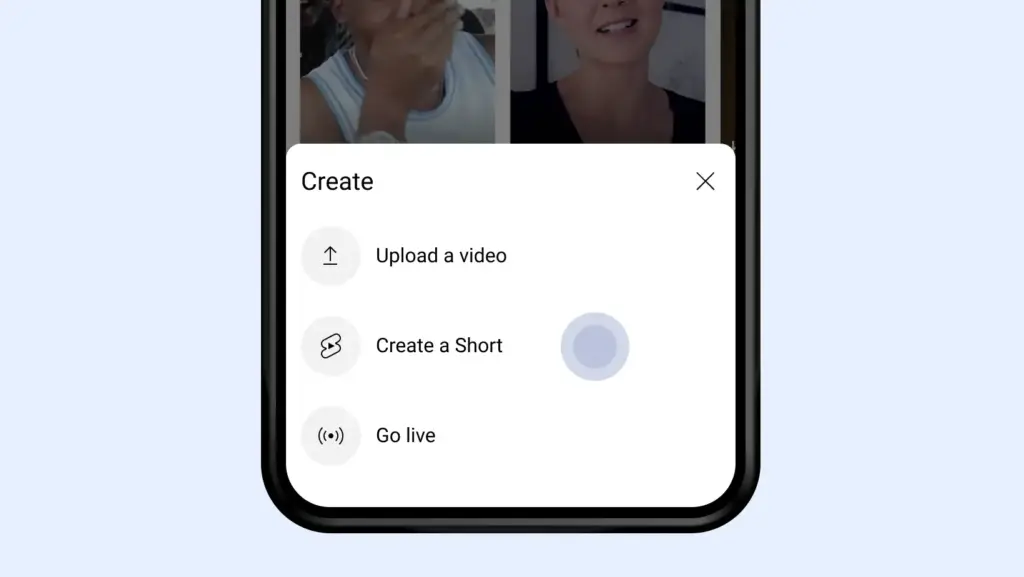
Repurposing video footage is a cost-effective way to stretch your budget and extend the life of your content. Edit a 5-minute YouTube video into a 15-second YouTube Short or social media video clips for platforms like TikTok or Instagram, ensuring versatility across channels.
Reuse B-roll footage for ads, blog posts, or email campaigns to enhance visual storytelling. Adapt brand videos for different aspect ratios to suit various social media platforms, maintaining consistency.
Catalog how-to videos or customer testimonials for ongoing use in onboarding, training, or sales pitches. These evergreen assets deliver value long after the initial campaign.
Extract images or GIFs from video clips for social media posts or website visuals, adding variety to your content mix. These assets can refresh your online presence without additional shoots.
Use a digital asset management system to organize video content, ensuring easy access for future marketing campaigns. This structured approach maximizes the lifetime value of your footage.
Strategic repurposing creates a robust library of video content that continues to deliver results, enhancing your video marketing efforts without requiring constant new production.
Conclusion
A successful video marketing strategy for small businesses combines clear video marketing goals, deep audience insight, and strategic execution. By creating high quality video content, optimizing for social media platforms, and leveraging video analytics, you can boost search engine rankings, engage potential customers, and drive conversions.
Whether crafting explainer videos, customer testimonial videos, short form video content, or brand videos, authenticity, meticulous planning, and repurposing are key to video marketing success. Start with cost-effective iPhone shoots, harness the power of social media channels, and repurpose video footage to build a winning video marketing strategy.
With the right approach, your small business can leverage video marketing to stand out, forge meaningful connections with audiences, and thrive in the competitive digital age.
If you need any guidance or support in developing your video marketing strategy, feel free to contact us—we’re here to help you create impactful video content that drives results.
